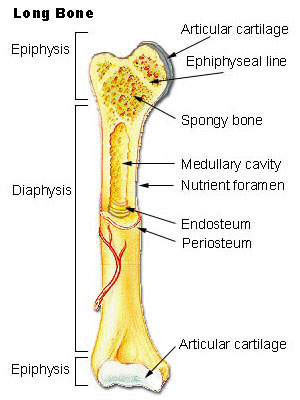Exercise and the bones
There are 206 named bones within the body, connected by over 200 joints. The aim of the skeleton is to provide support, protection, blood cell production, and mineral storage, locomotion (allowing the body to perform physical actions, using bones and muscles and joints as levers.)
Bones are bound together by ligaments, and attached to muscles by tendons; these are dense cords of fibrous connective tissue. At the end of most bones is a firm flexible connective tissue of dense collagen and elastic fibres called articular cartilage, which stop bones rubbing together and absorb shocks.
Ligaments are short cord like bands of flexible fibrous tissue. Because bones are well supplied with blood and nutrients, damage can be repaired fairly quickly compared to tendons and ligaments.
Long term effects of exercise increase bone density (the thickness of the bone), increase the strength of ligaments and joint structures and increase the thickness of articular cartilage. Within the centre of the bone are bone marrow, this produces red and white blood cells and platelets which are required with blood clotting.
Joints are lubricated by thick fluid called synovial fluid as movable joints are called synovial joints.

The spinal column protects the spinal cord, and holds the body in an upright position. It is made up of 26 vertebrae bones, between these intervertebral disks function as shock absorbers.
The skull, shoulder bones, ribs and pelvis are all attached to the spinal column, with vertebrae held together by ligaments. The curvature of the spinal column ensures our body weight in centred over our feet, while allowing a wide range of movements. Any damage or incorrect alignment of the spinal column hinders its function and can lead to further health complications, weakness or restrictive movement.

There are numerous conditions of the bones which effects its health, osteoporosis is one of the most common types of conditions and reduces the density of the bone, making it weaker, but also as we age our bone thickness reduces. Putting the bones under weight bearing exercise helps to increase bone density and reduces the effects of aging.